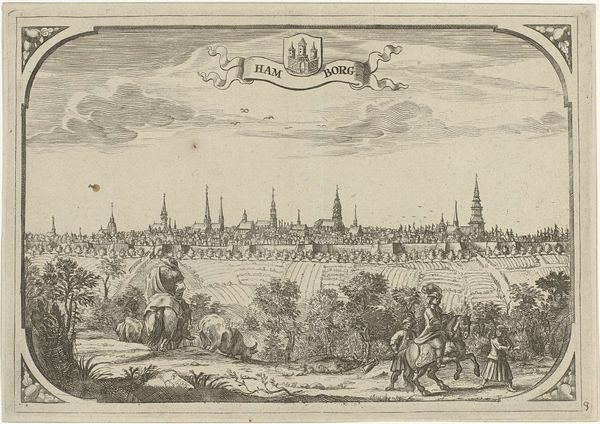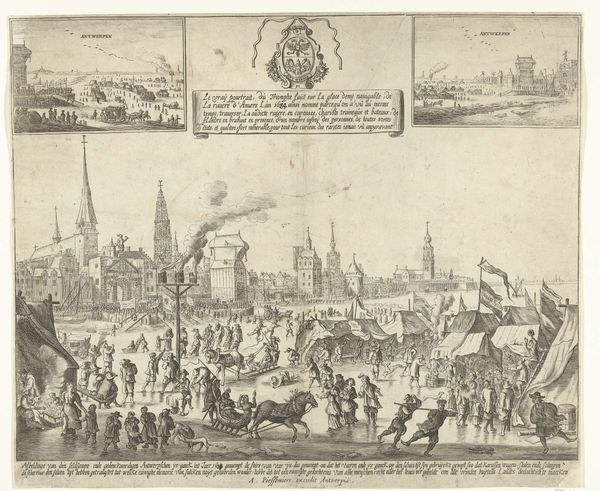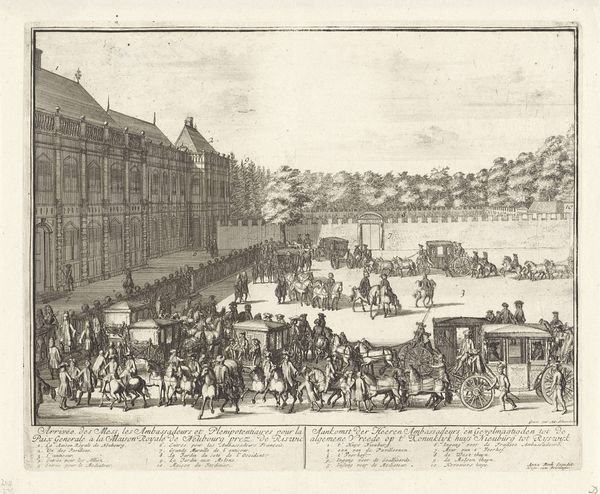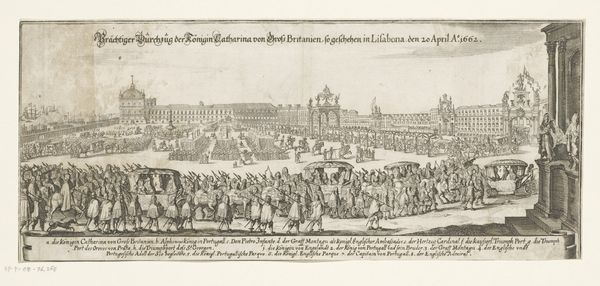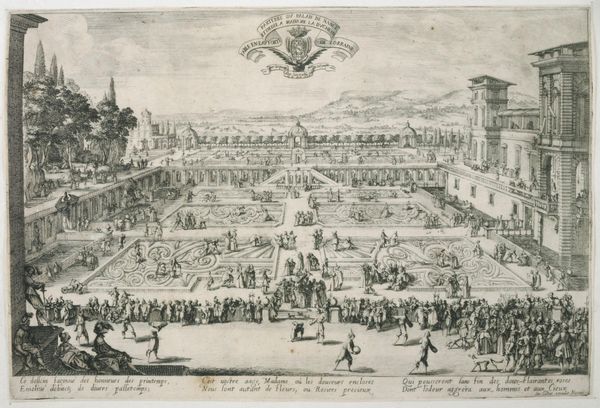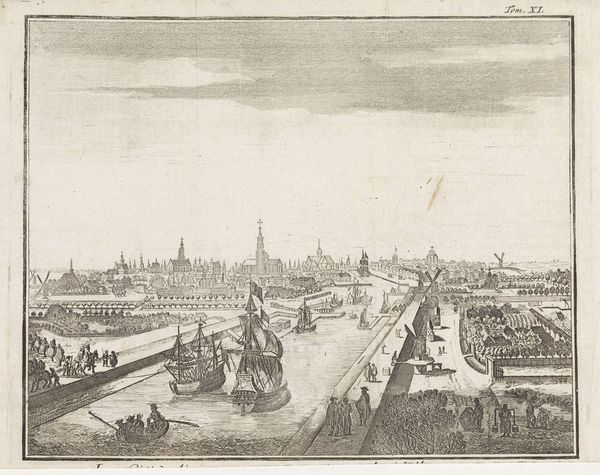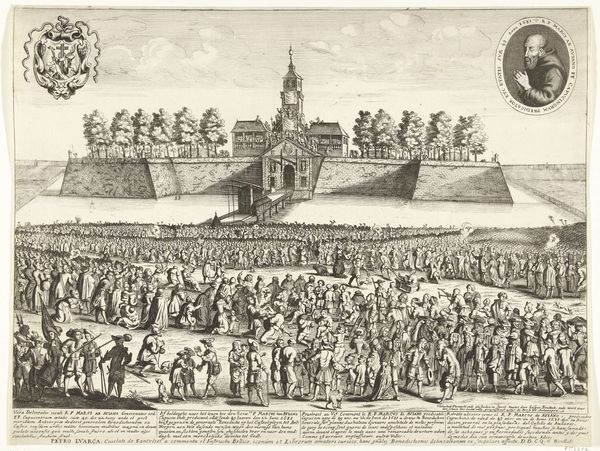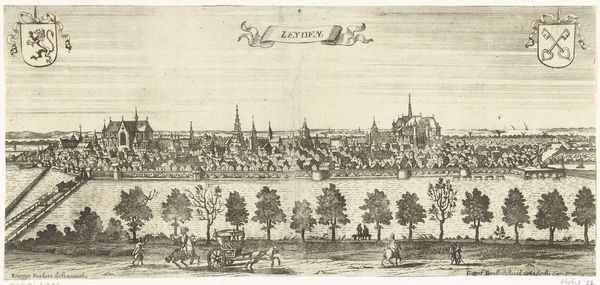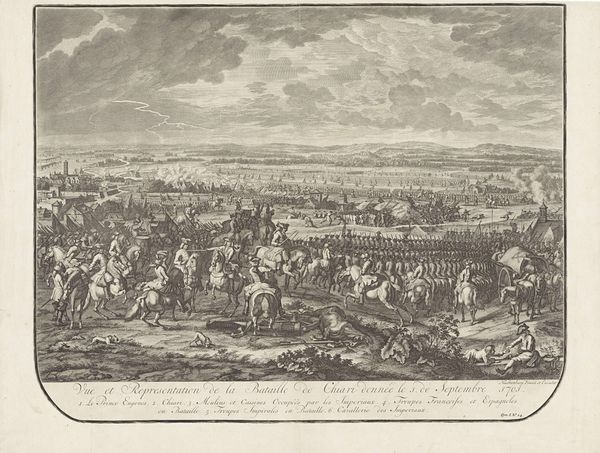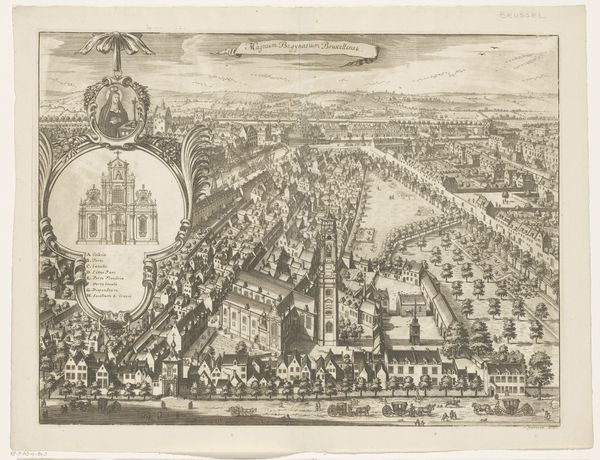
Aankomst van de stoet bij de stadspoort van Antwerpen; intocht van Ferdinand te Antwerpen in 1635 (nr. 3) 1639 - 1641
0:00
0:00
print, engraving
#
baroque
# print
#
old engraving style
#
cityscape
#
history-painting
#
engraving
Dimensions: height 312 mm, width 554 mm
Copyright: Rijks Museum: Open Domain
Editor: This engraving, "Arrival of the Procession at the City Gate of Antwerp; Entry of Ferdinand into Antwerp in 1635 (nr. 3)," created between 1639 and 1641 by Theodoor van Thulden, is teeming with life! It almost feels like I need a magnifying glass to take it all in, all these tiny figures... The overall impression is, well, rather grand and busy. What catches your eye most in this intricate depiction, would you say? Curator: Oh, what doesn't catch the eye! This isn't just an engraving; it's a historical snapshot, frozen in time, brimming with Baroque swagger. Van Thulden, bless his industrious soul, meticulously details Ferdinand's grand entry into Antwerp, and he's selling us the spectacle, see? It's propaganda, darling! Look at the sheer volume of people, a celebration, power consolidated in the city behind him. This print served a purpose – shaping perception! Now, how do you think the choice of engraving, rather than paint, influences the feel of this historical record? Editor: Hmm, an engraving… it feels official, almost like a document? More widespread, too, I imagine? Not some unique, precious artwork, but something to be distributed. Curator: Exactly! Paint says, "Here's a one-off." An engraving whispers, "This is repeatable. This is fact… and I'm printing many copies." Look at the use of line, that exquisite precision... it allows the scene to scale and scale. Tell me, how does knowing its function alter your read of the image? Editor: Well, seeing it as propaganda, that does shift things... it feels less like a neutral historical record, and more like a carefully crafted… narrative. All that detail contributes to a feeling of unquestionable legitimacy. I hadn't really thought of it that way before. Thanks! Curator: It’s all about perception, my dear, even centuries on. Never forget that!
Comments
No comments
Be the first to comment and join the conversation on the ultimate creative platform.
